The small village of Shirakawago is the most popular farming village in Japan. It was also on my list when I stayed in Takayama and visited the Japanese Alps. Most people only stay for a few hours, but I stayed for a full day and experienced how more and more empty the village became.
At the bus terminal
My start of the day trip wasn’t perfect. I had problems with my credit card in the afternoon beforehand and couldn’t get any new money. Luckily, I always keep some emergency euros and dollars with me, so I was able to change some money.
I woke up early to arrive at the bus treminal on time. After I had a FamilyMart breakfast, I arrived there at around 7:30am. Unfortunately, the first buses were already booked, and I had to wait until 9am for my bus. So I would definitely recommend to buy your bus ticket in advance, especially in peak season. I think that I even had luck as I travelled on a weekday. Otherwise, it would’ve been even worse.
Most people at the terminal waited for the Shirakawago buses, so the queue was incredibly long. I queued 30 minutes before departure, and there were already dozens of people waiting. They sent two buses, and I was one of the last ones in the first bus. The round trip to Shirakawago costs 4,600 Yen which is quite much for a 45-60 minutes bus ride.
After the bus was full, we went off to the village. But we didn’t come far. When the bus drove on the highway, it was immediately checked by the police. It took some time, and I even saw the second bus with the other passengers passing us. At the end, the bus continued its journey to the village. The bus arrived at the bus terminal of Shirakawago at 10am.
Ogimachi Castle Observation Deck
The bus terminal is in the north of Shirakawago close to Ogimachi Castle Observation Deck where you can get the best view of the village. It was also my first destination in the morning after I arrived. But first make sure to get a map at the tourist info next to the bus terminal and check the bus timetable. So you can plan your time in the village accordingly.
The shortest path to the observation deck is up a hill in the north of the bus terminal next to the big street. There’s also a sign that warns you to wear steady shoes and that it can be dangerous. It slightly worried me, because it froze the night beforehand. I also had the fear that it could be very slippery. Luckily, it wasn’t bad, and I got to the top without any problems.
There are two separate viewing spots. The first one is on a small road which leads down the village, and the other one is on the terrace of a shop which you can see when you arrive on the top of the hill. Both spots are free, but in my opinion the observation deck at the shop is even more beautiful. You might have to wait, as it’s very busy there when a tour group arrives. I also visited the observation deck later and saw that the shop and its complimentary terrace were closed. So when you plan to take some evening/night photos you can only use the spot on the road.
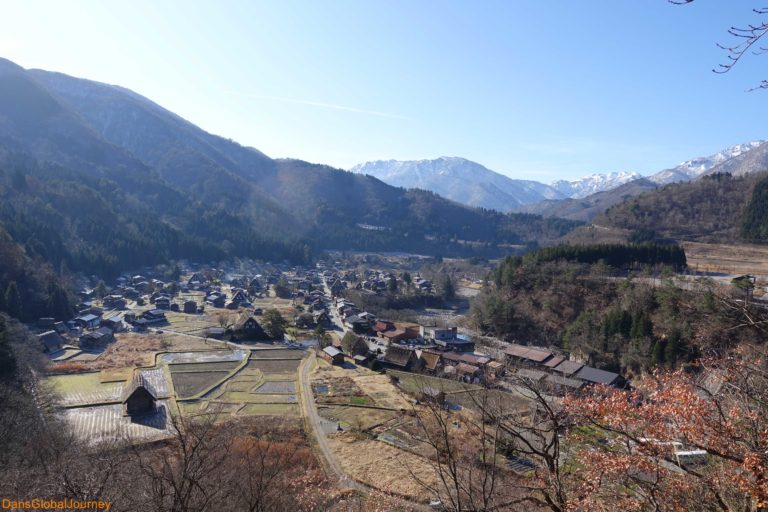
Walking in the village
Later, I went down the road to the village and saw the traditional houses and rice fields in close detail. The first thing I noticed about the gassho-zukuri farmhouses were the giant roofs which are constructed to withstand the masses of snow in winter. There are still several traditional houses left which characterize the old town of Shirakawago.
When I arrived at the village in the morning, most of the flooded rice fields were still frozen which added an additional charm. I spent the next two hours exploring the village and just walked around with no designated destination. I came across many small shops, restaurants and other tourists. There were quite many of them, especially in the morning.
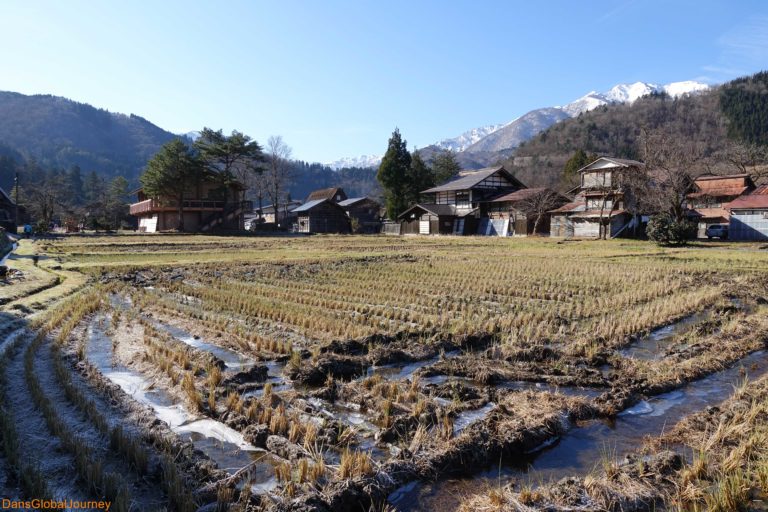
On my journey through the town I passed a few major sights. For example, Myozenji Temple from 1748. It’s actually the biggest building which is built in the traditional gassho-zukuri style.
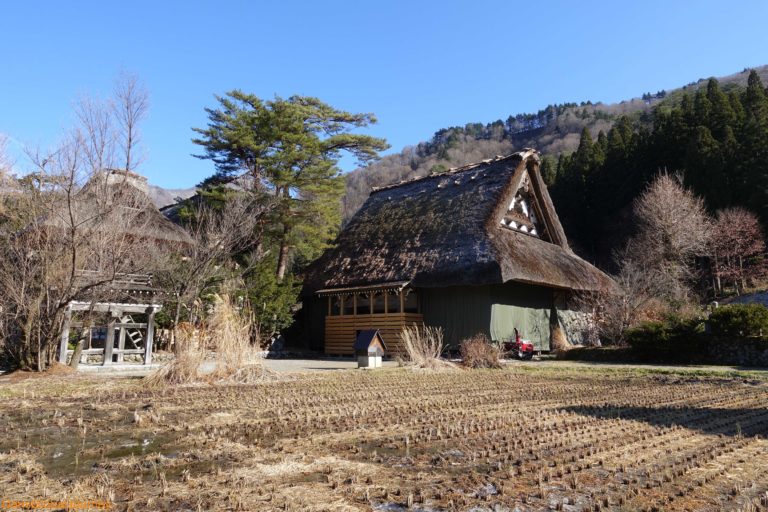
Another must-see sight of the village is Deai-Bashi Suspension Bridge which offers great views of the village and mountain scenery. But beware that it can be very shaky, it was incredible how much the bridge moved in the middle of it.
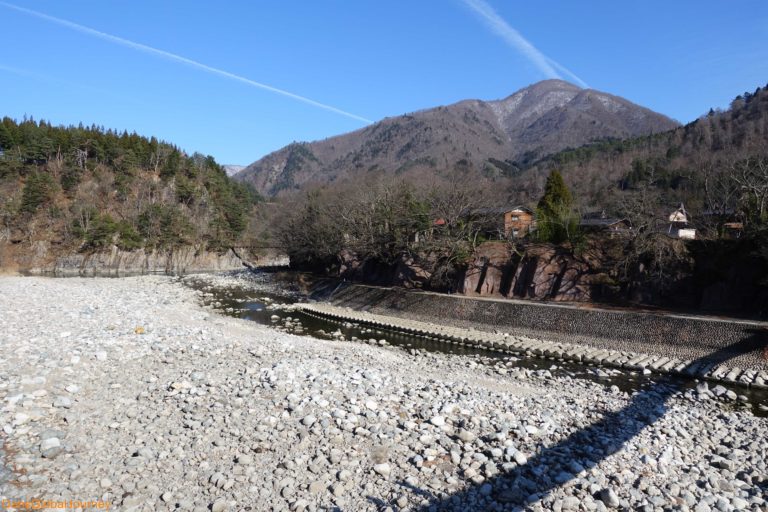
I also found out about the heritage museum Minkaen on the other side of the river. For an admission fee of 600 Yen, you can enter the open air museum which includes a shrine and a mill. I decided against it as it was already time for lunch, and I planned to visit some of the houses in the old village across the small river.
So the next mission was set, find something delicious for lunch. There is actually not too much choice in my opinion, therefore I decided to split my meals in multiple smaller ones and just get some snacks every few hours from the different food vendors in the village.
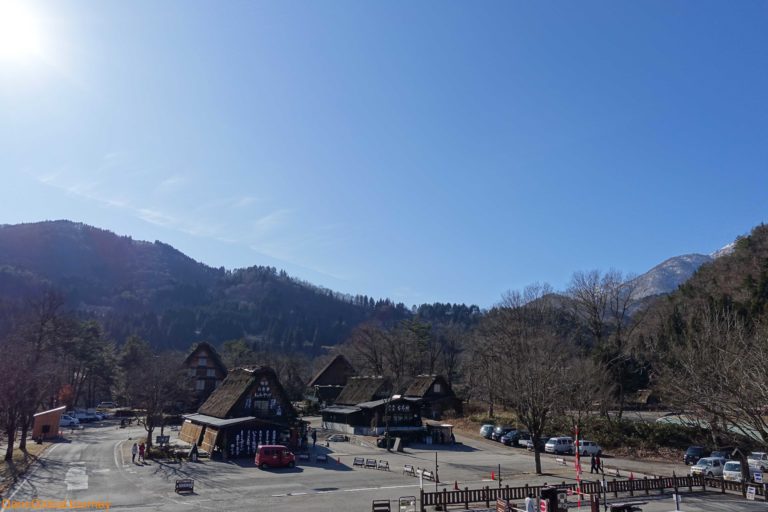
Kanda-ke House
After I ate a rice cake, I visited Kanda-ke House for 300 Yen. It’s located in the centre of the village and dates back to 1850. Be prepared to take off your shoes, luckily the house offered several slippers to choose from. I’ve already experienced other places in Japan which didn’t offer any slippers. In the end, I was happy that I still felt my toes.
Anyways, when I entered the house it was a really interesting experience as the architecture is very different from what I knew. There’s an open fireplace in the middle of the house which heats all rooms. So it’s possible to see it from the first and second floor. Something which was hard to get used to was the thick smoke of the fireplace. Even my eyes were watery because of it. It’s hard to imagine that people stay in the place for a long time.
It’s possible to go all the way up to the highest floor. From there, you have a great view of the surrounding village, houses and the roof design itself. The roof is designed in the purpose to cultivate silk worms there. Many families had them and produced their own silk in the past.
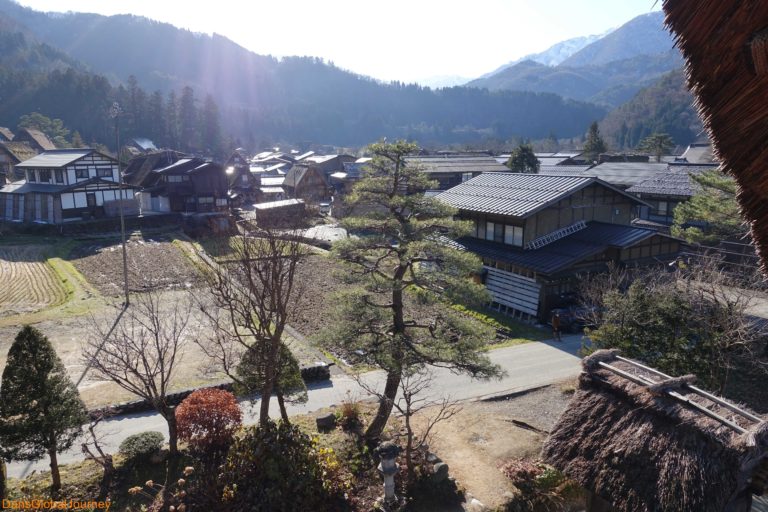
Wada House
After my visit, I enjoyed the nice weather and went to a bench to sit in the sun. I guess that I sat there for at least an hour. At that time, I also had some more snacks. For example, a croquette with Hida Beef which is a local speciality in this area of the Japanese Alps.
Then I continued my journey to the next famous traditional house, the Wada one. It’s the biggest gassho-zukuri farmhouse and also costs 300 Yen entrance. Similar to the first house you can visit several exhibitions which show the traditional tools and items that were used by the family. I also visited the upper floor with the interesting rooftop architecture.
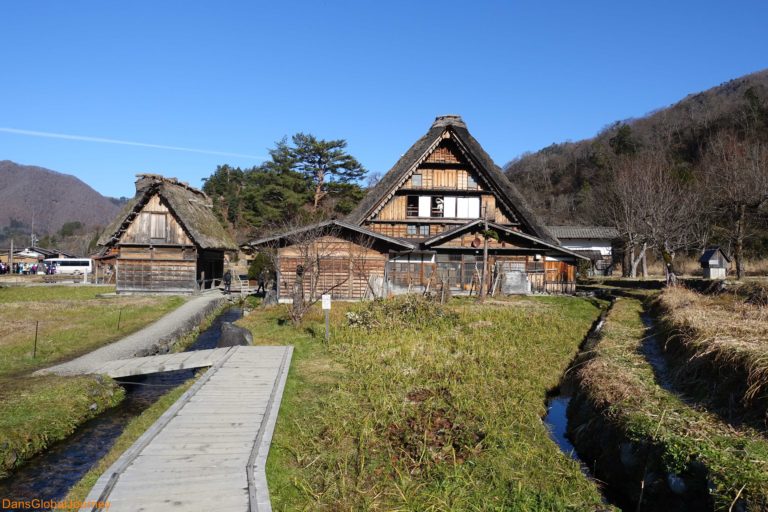
Late afternoon in the village
When I left the house, dusk has already started, and I decided to go to my last spot before I return to Takayama. I went uphill again to the observation deck to see a nice sunset. But I forgot about the surrounding mountains, and so the sun was nowhere to be seen. Nevertheless, it was still a nice view with some lightly illuminated houses down in the village. In the end, I decided to go back to the bus terminal when there was still some daylight left to use the steep staircase down the hill.
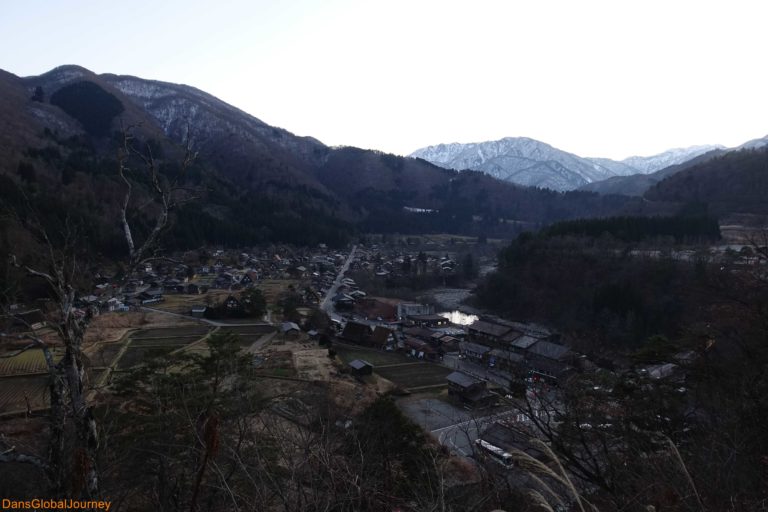
Overall, it was worth it to see Shirakawago although there can be lots of tourists. It’s also possible to stay in a traditional house for the night and experience the village even more quietly. I had the same experience when I walked around Kyoto shortly before midnight. Walking through the beautiful empty alleys is a magical experience.